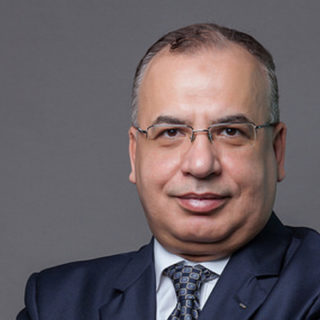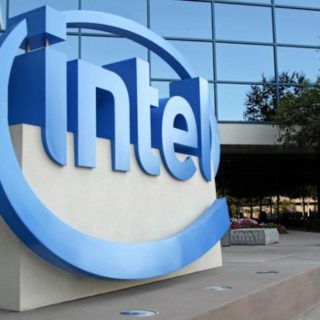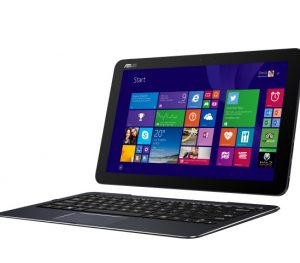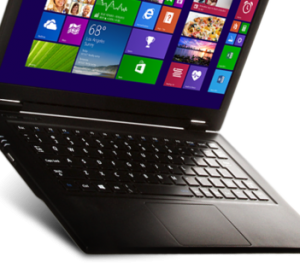
Marcus Jewell, vice president, EMEA at Brocade looks into his crystal ball to outline the top technology trends that Middle East enterprises should watch out for in 2014:
The Year 2013 will be remembered for many events, such as American scientists creating the first lab-grown body part using a 3D printer, Professor Peter Higgs – one of the scientists who discovered the Higgs Boson particle at CERN – winning the Nobel Prize for physics and Microsoft’s new Xbox One games console selling one million units in a single day, thanks to its promise of unmatched game-play and interactive user experience.
Marcus Jewell looks into his crystal ball to outline the top technology trends that Middle East enterprises should watch out for in 2014:
- Network functions virtualisation and software-defined “everything” will gain momentum: Globally, and in the Middle East, exploration of Network Functions Virtualisation (NFV) and software-defined technologies (network, virtualisation, data centre, storage and infrastructure) will evolve from being simply “research,” and enterprises – particularly in the service provider space – will begin to roll out production deployments. With more use buy cialis in canada cases, we will likely see larger deployments commissioned. As an industry, we are seeing a shift toward open, more flexible, efficient, highly programmable and elastic network infrastructure solutions with key initiatives such as OpenStack and the Open Daylight Project as well as disruptive technologies that will ultimately benefit organisations. At the same time, we expect NFV to gain prominence and drive new revenue opportunities for service providers by pulling managed services into the cloud, drastically cheapest prices on propecia reducing costs and increasing service agility. Although it may still be too early for full SDN deployments, a key buy levitra pro decision making criteria for infrastructure will be to ensure that infrastructure will support SDN going forward. Open architecture will be key cheap canadian viagra to this future-proof strategy.
2. Trimming the fat in data centres and cloud architectures: Technology disruptions are forcing us to fundamentally rethink how networks should be architected, designed, deployed and operated in data centres. Networks are more critical than ever to deliver applications, and we believe fabrics will play a pivotal role to accelerate this transformation – with drastic improvements in network efficiency, resource utilisation and performance. The explosion of data is forcing an end to the traditional three-tier network and with Gartner predicting that by 2014, 80 percent of network traffic will flow from server to server, we expect to see Middle East enterprises continuing to flatten their networks. They will benefit from more powerful and resilient networks, while ensuring that the networks can massively grow network capacity on demand without disruptions. Even at the age of 40, Ethernet will continue to revolutionise networking.
3. Clouds loom large: According to Gartner, the push for more personal cloud technologies will lead to a shift toward services and away from devices. In addition, a study by 451 Research forecasts that the worldwide cloud computing market is expected to grow at a 36 percent compounded annual growth rate (CAGR) through 2016, reaching a market size of $19.5 billion by 2016. These figures demonstrate that CIOs are aware of the new business models, consumption models, user expectations, security issues and privacy concerns associated with the cloud – and they will use the cloud to drive growth and innovation throughout their organisations. In 2014, we expect the cloud to develop into a key business enabler and, as private clouds mature, the desire to leverage public cloud elasticity will grow.
4. The internet revolution continues unabated: Robert Metcalfe, the inventor of Ethernet, states that the power of a network increases by the square of the number of nodes connected to it. According to IDC, the total “Internet of Things” market including technologies and services will be $8.9 trillion (US) by 2020, with 212 billion devices connected to the Internet, changing networking forever. Although concerns over security and interoperability with devices still remain, the Internet of Things is set to revolutionise industries such as healthcare, retail and transportation with the movement gaining traction in 2014. As a result, Middle East enterprises need to start studying how the Internet of Things will affect their business.
5. Big data becomes too big to handle: BYOD and the explosion of data (especially video content) are causing many new challenges as the amount of data becomes too much to handle in terms of getting value from it and in defining a strategy. Enterprises in the Middle East will go back to basics in 2014 and ask fundamental questions of their data centre infrastructures as they look to deal with unprecedented data volumes: What are the objectives? Are we collecting the correct data? How can we use this to enable change in our business? Companies who cannot answer these questions adequately will struggle in the next 12 months. Furthermore, we expect to see one or two significant cases of network shutdowns caused by data overload.















